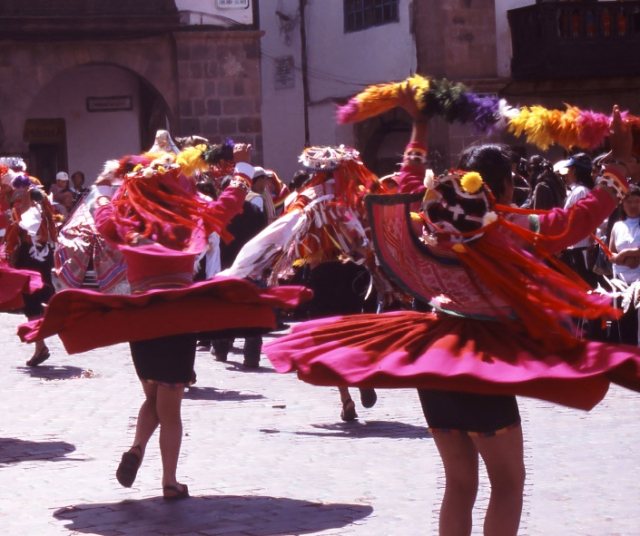Spain is a country bustling with a wide variety of festivals and celebrations throughout the year. These parties are much more than just events; They are manifestations deeply rooted in the history, culture and identity of the various Spanish regions.
La Tomatina: A Battle of Tomatoes in Buñol
We begin our tour of Spain's festivals with a unique and colorful event: La Tomatina. Held on the last Wednesday of August in the small town of Buñol, in the Valencian Community, this festival attracts thousands of people from all over the world to participate in one of the largest food battles on the planet.
La Tomatina is a celebration that dates back to the 1940s, when a group of young people started a tomato fight in the town square. Over time, this tradition became an annual event that attracts tourists and locals alike. During the Tomatina, tons of ripe tomatoes are thrown among the participants, turning the narrow streets of Buñol into a sea of red, juicy puree.
Beyond the fun and apparent chaos, the Tomatina is a reflection of the festive spirit and camaraderie that characterize many Spanish festivals. In addition, it has been recognized as a Festival of International Tourist Interest since 2002, which underlines its cultural importance and global appeal.
The Fallas of Valencia: Ephemeral Art and Tradition
Another prominent event in the Spanish festive calendar is the Fallas of Valencia. Celebrated from March 15 to 19, these festivals are an explosion of color, music and fireworks that attract millions of visitors each year.
Las Fallas have their roots in the festivities in honor of San José, the patron saint of carpenters. For centuries, Valencian artisans burned their winter waste in bonfires to welcome spring. Over time, these modest bonfires evolved into elaborate, ephemeral monuments known as "fallas."
Each neighborhood in Valencia builds its own fallas, which are enormous cardboard, wood and polystyrene structures decorated with satirical figures and caricatures of public figures. During Fallas week, these artistic creations are displayed in the streets of the city before being burned on the night of March 19, in a pyrotechnic show that marks the climax of the celebration.
Las Fallas are not only a display of artistic skill and creativity, but also a tribute to the Valencian identity and community. Furthermore, in 2016 they were declared Intangible Cultural Heritage of Humanity by UNESCO, highlighting their cultural importance and lasting legacy.
The Carnival of Santa Cruz de Tenerife: A Festival of Masks and Dances
The Carnival of Santa Cruz de Tenerife is another iconic event that deserves a prominent place in our tour of the holidays in Spain. Held on the island of Tenerife in the Canary Islands, this carnival is one of the largest and liveliest in the world, second only to the famous Rio de Janeiro Carnival in Brazil.
The roots of Tenerife Carnival date back to the 16th century, when Spanish settlers brought with them festive traditions that merged with the region's indigenous cultures. Today, the carnival is an explosion of color, music and dance that attracts visitors from all over the world.
One of the most distinctive characteristics of the Santa Cruz de Tenerife Carnival is its parades of floats and troupes, where participants wear elaborate and colorful costumes while dancing to the rhythm of music. Additionally, the Carnival Queen pageant is a notable event, where contestants compete wearing extravagant and elaborate costumes, which often take months to make.
The Tenerife Carnival is a celebration that celebrates diversity, creativity and the joy of life. For a week, the city is transformed into a fantasy setting where everyday worries are put aside in favor of the festive spirit and unbridled fun.
Holy Week in Seville: Religion, Tradition and Emotion
Last but not least, we have Holy Week in Seville, one of the most solemn and emotional celebrations in Spain. During this week, Seville is immersed in an atmosphere of devotion and reverence, as faithful and visitors participate in religious processions that commemorate the passion and death of Jesus Christ.
Holy Week in Seville is an event of great religious and cultural importance that attracts hundreds of thousands of people each year. The processions, which date back to the 16th century, are the highlight of the celebration. Each brotherhood, many of which are centuries old, carries out its own procession, carrying religious images through the city streets in ornate steps and accompanied by solemn music and chants.
The days leading up to Holy Week are filled with frenetic preparations, with brotherhoods working hard to make sure everything is ready for the processions. The steps, which are often masterpieces of religious sculpture, are carefully restored and adorned with flowers and candles.
For Sevillians, Holy Week is much more than a religious celebration; It is a deep expression of identity and tradition. The processions offer a moment of reflection and contemplation amidst the bustle and daily activity, and are a tangible reminder of the city's history and heritage.
These parties are not only festive events; They are manifestations deeply rooted in the daily life and identity of local communities. Through music, dance, art and religion, Spain's festivals celebrate the life, creativity and cultural diversity of this fascinating country.
